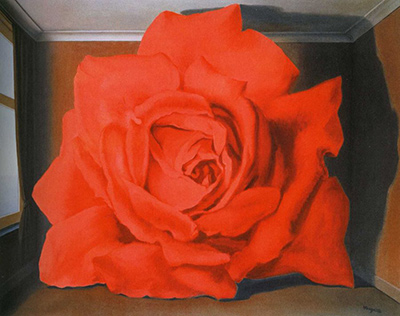Rene Magritte is known for his philosophical motivations channeled through his works of art. He came into the scene of surrealism with a new twist of creativity that transformed the way art is presented and how ideas are crafted and showcased to the world.
His strength was in taking otherwise ordinary objects and embedding a strong message in them in a manner that his audience would be forced to invest their thoughts in the picture to extract the message and meaning that lay hidden in his creativity. His aim was to create surreal art pieces that would surpass the definition of time. His focus on offering timeless works has to date earned him a lot of respect. When Rene Magritte did The Tomb of the Wrestlers, he focused on a conversation he had with a New York lawyer and poet, Harry Torczyner, in 1960. Its theme was around the Soviet Union’s tachisim used by painters, but one that he did not like. He was asked by the lawyer to make a white rose on a white background, but this did not give him much of a difficulty.
What he wanted to achieve was to present his message more visually, so he chose red with shades of while and a white background in a room. His image was paying tribute to several people one of them being Stalin, who had just died. A rose is an item that symbolizes many things including love and death, so he filled it in a room to suggest his total commitment to spreading the continuation of building solid societies that would not be divided by war.
Fascinated by the interactions of visual and textual signs, Rene Magritte made famous pictures, most of which employed both images and words. He shared an air of mystery through art and was motivated by a spirit of upholding rational enquiry, and wonder.
Rene was the eldest child in a family of three boys and his family was fairly well-off. His father, as is often thought, worked in the manufacturing industry, while his mother worked as a milliner before she got married. Rene started learning about art at the Academie des Beaux-Arts College in 1916, but he was not inspired enough by the lessons, so he opted out in 1918 and began making artistic presentations.




